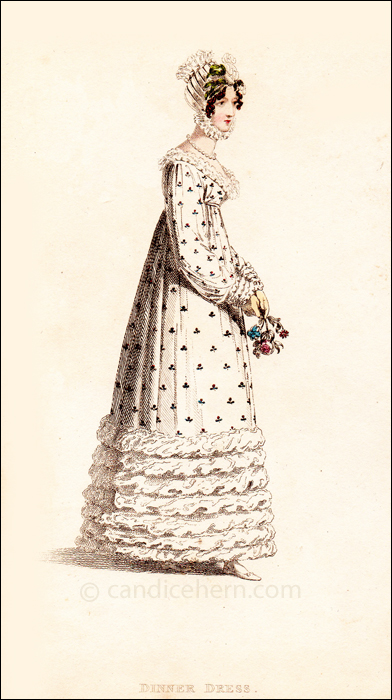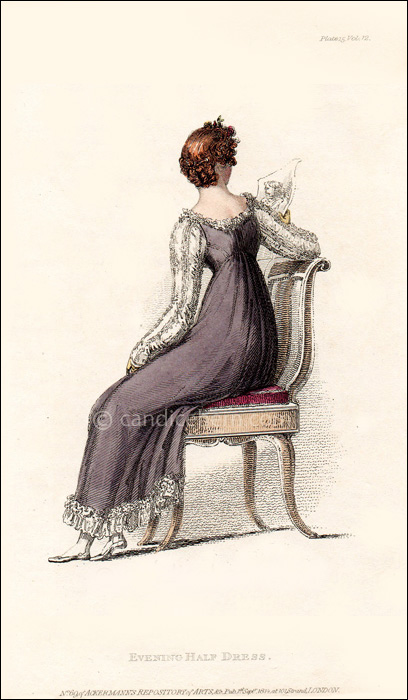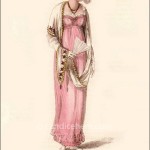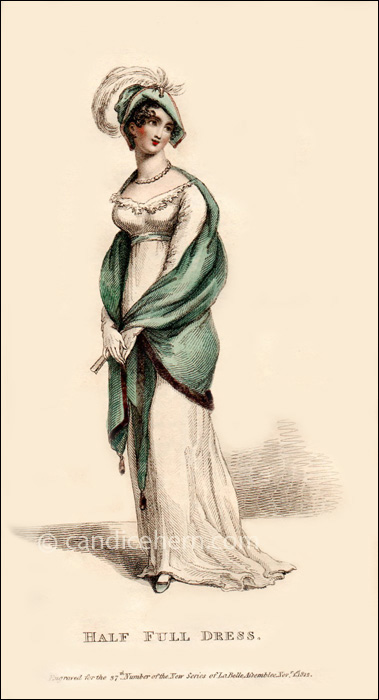Ackermann’s Repository of Arts, July 1817.
The ensemble exhibits an interesting dichotomy of a very matronly cap, tied primly beneath the chin, with an extremely low-cut bodice that exposes both the bosom and the upper back. Personally, I think the dress would look much more becoming without the prim cap, but this late Regency era was a time when designers experimented with all sorts of accessories and embellishments in search of the next great look. Some efforts were less successful than others.
The print is described in the magazine as follows:
“A round dress, comprised of jaconet muslin, embroidered in small roses. The skirt is finished round the bottom with a profusion of rouleaus of clear muslin, which are fancifully wreathed with white satin. The body fastens behind; it comes high on the shoulder, but is cut very low round the bosom and back of the neck. The front forms the shape on a most becoming manner. Plain long sleeve, finished at the wrist to correspond with the skirt. Head-dress, cornette à la Ninon, composed of tulle and rouelaus of pale green satin. The crown is decorated with a wreath of leaves in pale green satin, to correspond with the rouleaus, and a broad lace set on very full. The cornette fastens under the chin, and has a full quilling of lace all round. The hair is parted so as to display the forehead and eyebrows, and dressed very light at the sides. Necklace and ear-rings, white cornelian mixed with gold. White kid slippers and gloves.”








